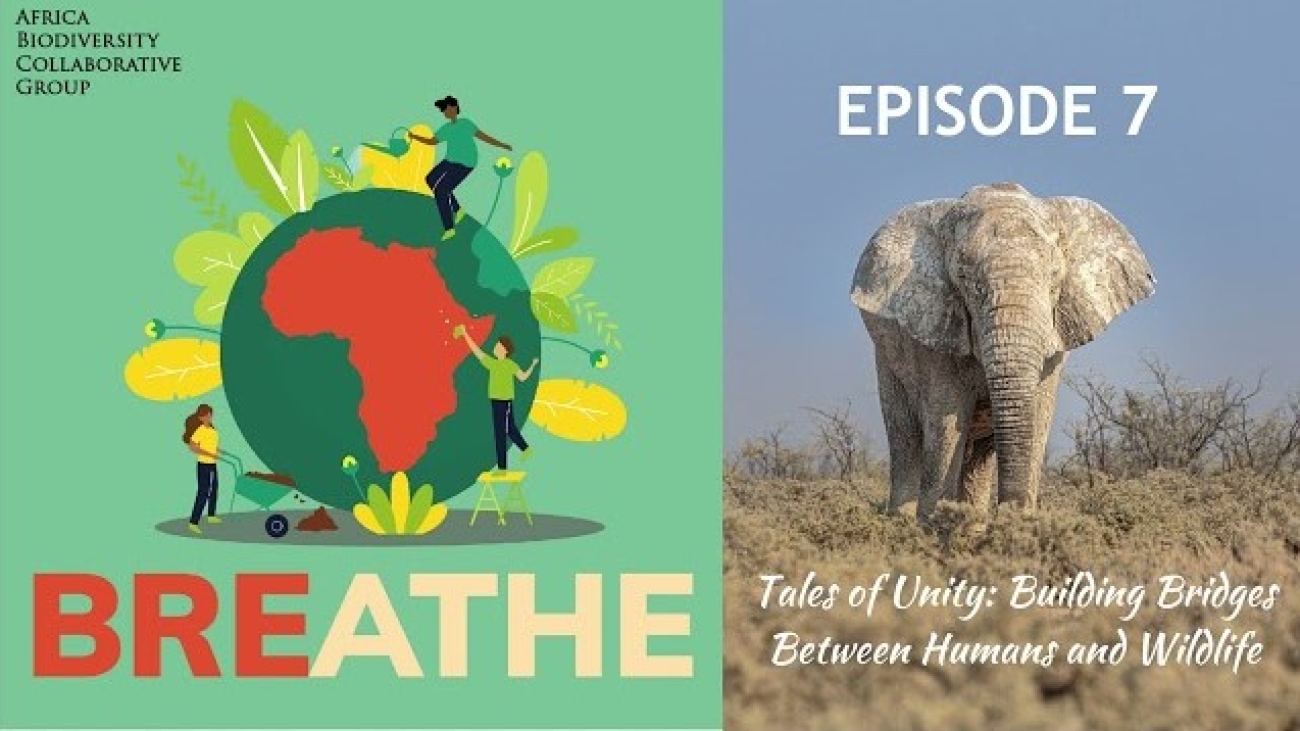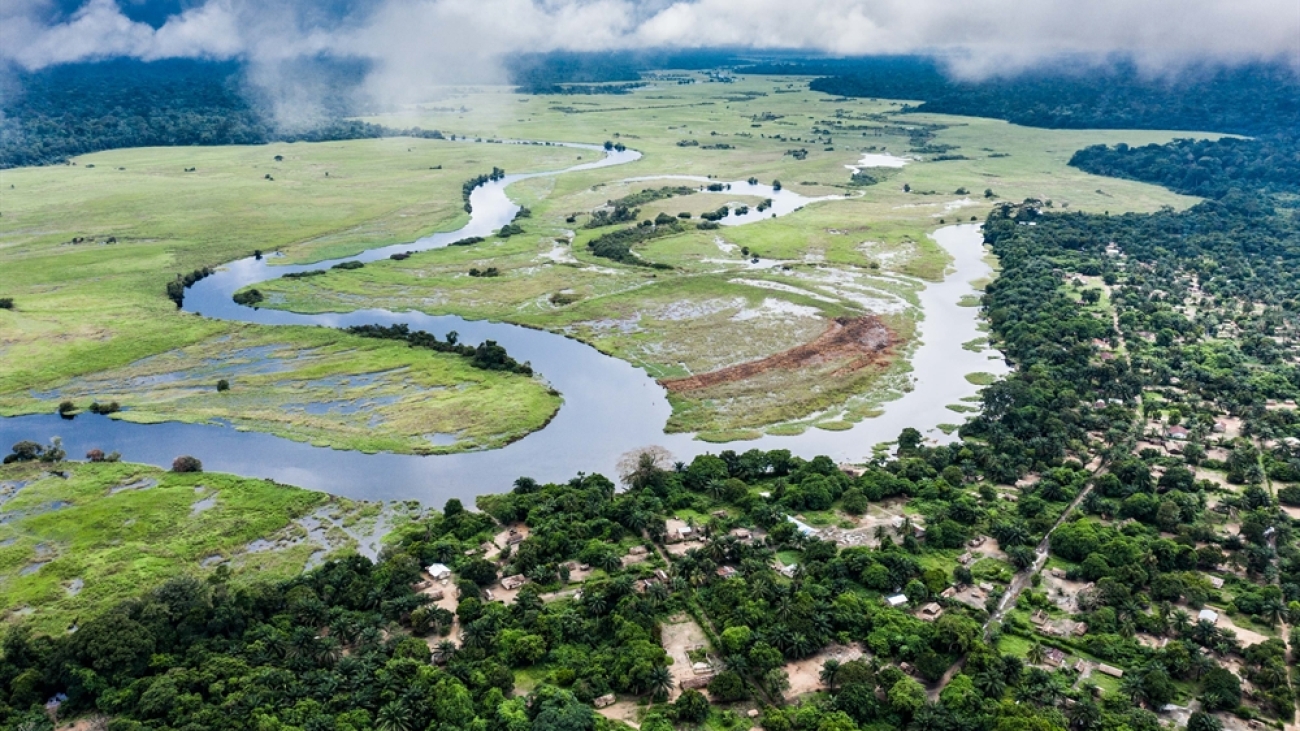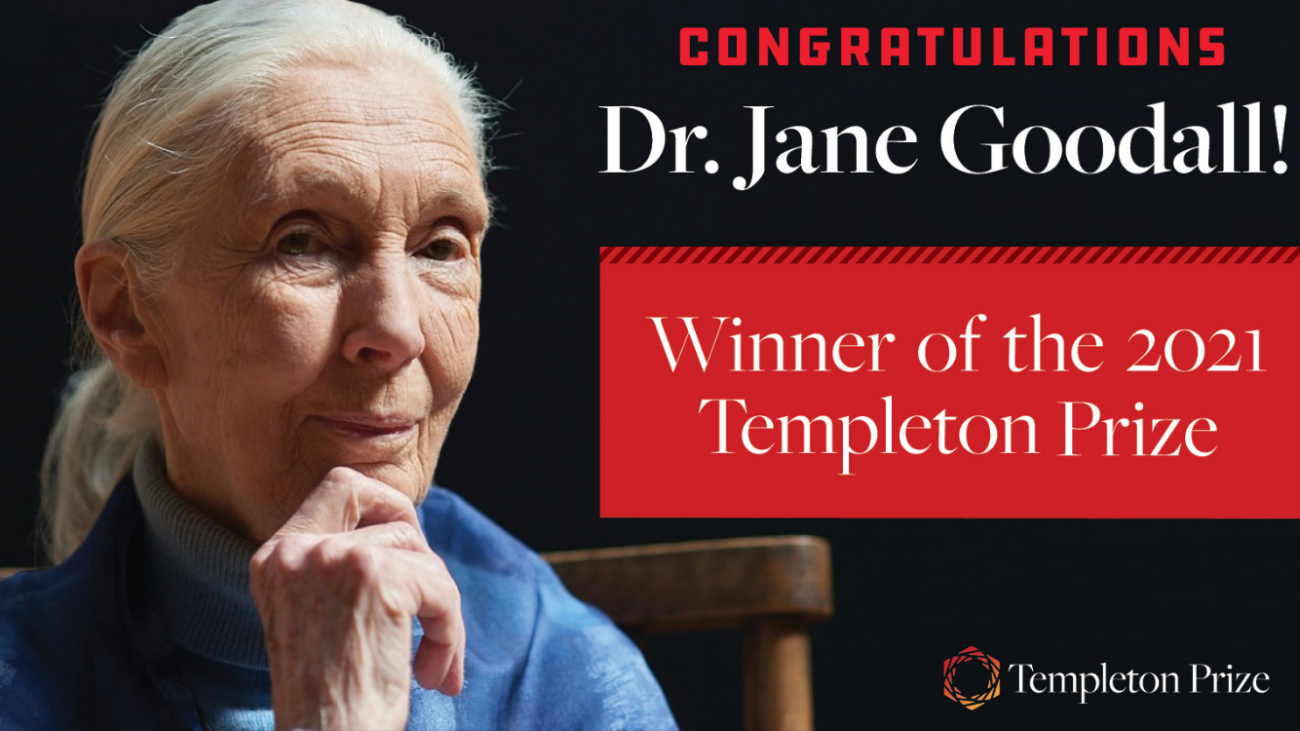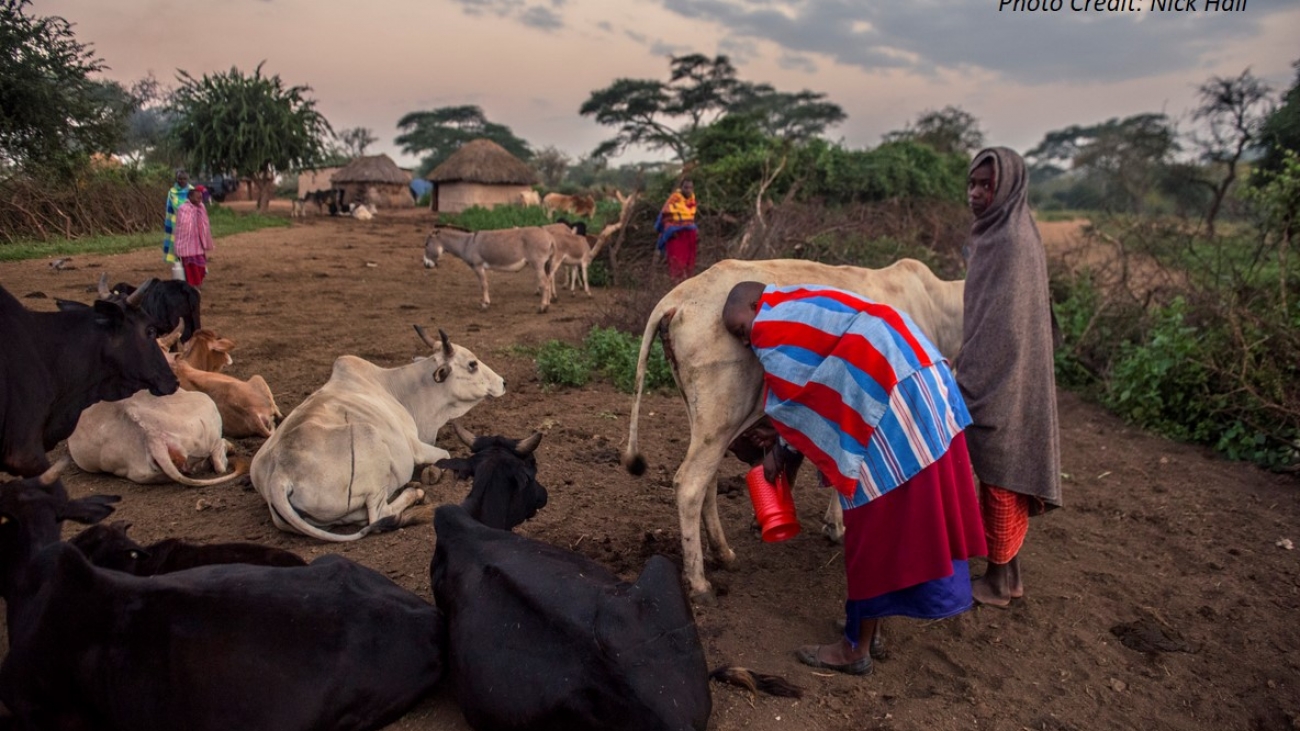Join us for the captivating episode of BREATHE as we embark on a journey to unravel one of the most pressing challenges of our era – how to harmoniously share our planet with its diverse wildlife inhabitants. In a world where urbanization continues to expand and natural habitats dwindle, the dynamic interplay between human communities and the animal kingdom has grown increasingly intricate.
Ten Africa Priorities for COP28
Africa’s Priorities for COP28
News spotlight: A climate hero emerges — beavers
<p><em>Editor’s note: News about conservation and the environment is made every day, but some of it can fly under the radar. In a recurring feature, Conservation News shares a recent news story that you should know about.</em></p><p><span style="background-color:initial;font-family:inherit;font-size:inherit;text-align:inherit;text-transform:inherit;white-space:inherit;word-spacing:normal;caret-color:auto;">Over the last half century, droughts and urban expansion have contributed to the destruction and degradation of <a href="https://www.ramsar.org/" target="_blank">35 percent</a> of the world’s wetlands. In fact, these ecosystems — which help regulate Earth’s climate and protect our biodiversity — are disappearing <a href="https://unfccc.int/news/wetlands-disappearing-three-times-faster-than-forests" target="_blank">three times faster</a> than forests. </span></p><p><span style="background-color:initial;font-family:inherit;font-size:inherit;text-align:inherit;text-transform:inherit;white-space:inherit;word-spacing:normal;caret-color:auto;"></span><span style="background-color:initial;font-family:inherit;font-size:inherit;text-align:inherit;text-transform:inherit;white-space:inherit;word-spacing:normal;caret-color:auto;">How might we stymie this decline? Introducing beavers back into their natural habitats is a good start, <a href="https://twitter.com/NavinSinghKhadk" target="_blank">Navin Singh Khadka reports for the BBC</a>.</span></p><p><span style="background-color:initial;font-family:inherit;font-size:inherit;text-align:inherit;text-transform:inherit;white-space:inherit;word-spacing:normal;caret-color:auto;"></span><span style="background-color:initial;font-family:inherit;font-size:inherit;text-align:inherit;text-transform:inherit;white-space:inherit;word-spacing:normal;caret-color:auto;">Once hunted to near extinction for their fur, beavers have been reintroduced to parts of North America and northern Europe in more than 100 successful programs — giving scientists a view into their role as <a href="https://www.ncbi.nlm.nih.gov/pmc/articles/PMC7883483/" target="_blank">ecosystem engineers</a>. </span></p><p><span style="background-color:initial;font-family:inherit;font-size:inherit;text-align:inherit;text-transform:inherit;white-space:inherit;word-spacing:normal;caret-color:auto;"></span><span style="background-color:initial;font-family:inherit;font-size:inherit;text-align:inherit;text-transform:inherit;white-space:inherit;word-spacing:normal;caret-color:auto;">"Basically, beavers excel at creating complex wetland habitats that we’d never match,” Nigel Willby, professor of freshwater science at University of Stirling, told the BBC. </span></p><p><span style="background-color:initial;font-family:inherit;font-size:inherit;text-align:inherit;text-transform:inherit;white-space:inherit;word-spacing:normal;caret-color:auto;"></span><span style="background-color:initial;font-family:inherit;font-size:inherit;text-align:inherit;text-transform:inherit;white-space:inherit;word-spacing:normal;caret-color:auto;">"Anyone can make a pond, but beavers make amazingly good ponds for biodiversity, partly because they are shallow, littered with dead wood and generally messed about with by beavers feeding on plants, digging canals, repairing dams, building lodges, etc.,” he added.</span></p><p><span style="background-color:initial;font-family:inherit;font-size:inherit;text-align:inherit;text-transform:inherit;white-space:inherit;word-spacing:normal;caret-color:auto;"></span><span style="background-color:initial;font-family:inherit;font-size:inherit;text-align:inherit;text-transform:inherit;white-space:inherit;word-spacing:normal;caret-color:auto;">The shallow ponds created by Beaver dams can contain nearly twice as many mammal species as other ponds, according to a <a href="https://link.springer.com/article/10.1007/s10530-019-01919-9" target="_blank">2018</a> study. Beavers can even help protect wetlands.</span></p><p><span style="background-color:initial;font-family:inherit;font-size:inherit;text-align:inherit;text-transform:inherit;white-space:inherit;word-spacing:normal;caret-color:auto;"></span><span style="background-color:initial;font-family:inherit;font-size:inherit;text-align:inherit;text-transform:inherit;white-space:inherit;word-spacing:normal;caret-color:auto;">Emily Fairfax, an ecohydrologist at California State University, studied 10 different wildfires in the United States between 2000 and 2021. In each case, she found beavers and their ecosystem engineering created and preserved wetlands — even through megafires and serious drought — by slowing the flow of water and holding it in the landscape longer.</span></p><p><span style="background-color:initial;font-family:inherit;font-size:inherit;text-align:inherit;text-transform:inherit;white-space:inherit;word-spacing:normal;caret-color:auto;"></span><span style="background-color:initial;font-family:inherit;font-size:inherit;text-align:inherit;text-transform:inherit;white-space:inherit;word-spacing:normal;caret-color:auto;">"This transforms simple streams into thriving wetland ecosystems," Fairfax told the BBC.</span></p><p><span style="background-color:initial;font-family:inherit;font-size:inherit;text-align:inherit;text-transform:inherit;white-space:inherit;word-spacing:normal;caret-color:auto;"></span><span style="background-color:initial;font-family:inherit;font-size:inherit;text-align:inherit;text-transform:inherit;white-space:inherit;word-spacing:normal;caret-color:auto;">And thriving wetlands stash away climate-heating carbon. For example, peatlands, a type of wetland ecosystem made up of decaying waterlogged plants, store massive amounts of “<a href="https://www.conservation.org/projects/irrecoverable-carbon">irrecoverable carbon</a>” — that is, carbon that, if emitted into the atmosphere, could not be restored by 2050. </span></p><p><span style="background-color:initial;font-family:inherit;font-size:inherit;text-align:inherit;text-transform:inherit;white-space:inherit;word-spacing:normal;caret-color:auto;"></span><span style="background-color:initial;font-family:inherit;font-size:inherit;text-align:inherit;text-transform:inherit;white-space:inherit;word-spacing:normal;caret-color:auto;">A Conservation International <a href="https://www.nature.com/articles/s41893-021-00803-6" target="_blank">study</a> mapped the world’s irrecoverable carbon and found that around the world peatlands have locked away more than 39 billion metric tons of irrecoverable carbon. </span></p><p><span style="background-color:initial;font-family:inherit;font-size:inherit;text-align:inherit;text-transform:inherit;white-space:inherit;word-spacing:normal;caret-color:auto;"></span><span style="background-color:initial;font-family:inherit;font-size:inherit;text-align:inherit;text-transform:inherit;white-space:inherit;word-spacing:normal;caret-color:auto;">As evidence of wetlands’ underappreciated role in storing carbon mounts, finding new ways to restore these ecosystems is fundamental. The beaver might just help.</span></p><p><span style="background-color:initial;font-family:inherit;font-size:inherit;text-align:inherit;text-transform:inherit;white-space:inherit;word-spacing:normal;caret-color:auto;"></span><span style="background-color:initial;font-family:inherit;font-size:inherit;text-align:inherit;text-transform:inherit;white-space:inherit;word-spacing:normal;caret-color:auto;">Read the full story <a href="https://www.bbc.com/news/science-environment-64502365" target="_blank">here</a>.</span></p><p><span style="background-color:initial;font-family:inherit;font-size:inherit;text-align:inherit;text-transform:inherit;white-space:inherit;word-spacing:normal;caret-color:auto;"></span><span style="background-color:initial;font-family:inherit;font-size:inherit;text-align:inherit;text-transform:inherit;white-space:inherit;word-spacing:normal;caret-color:auto;">Further reading:</span></p><ul><li><span style="background-color:initial;font-family:inherit;font-size:inherit;text-align:inherit;text-transform:inherit;white-space:inherit;word-spacing:normal;caret-color:auto;"></span><span style="background-color:initial;font-family:inherit;font-size:inherit;text-align:inherit;text-transform:inherit;white-space:inherit;word-spacing:normal;caret-color:auto;"><a href="https://www.conservation.org/blog/5-things-you-should-know-about-wetlands">5 things you should know about wetlands</a></span></li><li><span style="background-color:initial;font-family:inherit;font-size:inherit;text-align:inherit;text-transform:inherit;white-space:inherit;word-spacing:normal;caret-color:auto;"></span><span style="background-color:initial;font-family:inherit;font-size:inherit;text-align:inherit;text-transform:inherit;white-space:inherit;word-spacing:normal;caret-color:auto;"><a href="https://www.conservation.org/blog/these-ecosystems-could-determine-our-climate-future-study">These ecosystems could determine our climate future: study</a></span></li><li><span style="background-color:initial;font-family:inherit;font-size:inherit;text-align:inherit;text-transform:inherit;white-space:inherit;word-spacing:normal;caret-color:auto;"></span><span style="background-color:initial;font-family:inherit;font-size:inherit;text-align:inherit;text-transform:inherit;white-space:inherit;word-spacing:normal;caret-color:auto;"><a href="https://www.conservation.org/blog/in-china-engineered-wetlands-remove-waste-from-fresh-water">In China, engineered wetlands remove waste from fresh water</a></span></li></ul><div><em>Max Marcovich is a staff writer at Conservation International. Want to read more stories like this? <a href="https://www.conservation.org/act/subscribe">Sign up for email updates</a>. Also, <a href="https://www.conservation.org/act">please consider supporting our critical work</a>.</em></div>
5 life lessons from women in science
<div><p>The gender gap in science is no secret — <a href="http://uis.unesco.org/en/topic/women-science" target="_blank">fewer than 30 percent</a> of the world’s researchers are women. And while the number of women pursuing careers in science is steadily rising, the lack of representation can be a tough hurdle to overcome. </p><p><span style="background-color:transparent;color:inherit;font-family:inherit;font-size:inherit;text-align:inherit;text-transform:inherit;white-space:inherit;word-spacing:normal;caret-color:auto;">Yet the research is clear — <a href="https://www.pnas.org/doi/10.1073/pnas.1700616114" target="_blank">gender diversity</a> improves the scientific process. In conservation, women’s direct participation and <a href="https://www.unwomen.org/en/news-stories/explainer/2022/03/explainer-why-women-need-to-be-at-the-heart-of-climate-action" target="_blank">decision-making</a> results in stronger and more equitable outcomes.</span></p></div><div><p><span style="background-color:initial;font-family:inherit;font-size:inherit;text-align:inherit;text-transform:inherit;white-space:inherit;word-spacing:normal;caret-color:auto;">In celebration of International Day of Women and Girls in Science, five Conservation International scientists reflect on their early careers and share advice they would give to their younger selves.</span></p></div><p><img src="https://www.conservation.org/images/default-source/temp/idow-stem-23_1.jpg?sfvrsn=ba17536b_1" style="background-color:initial;font-family:inherit;font-size:inherit;text-align:inherit;text-transform:inherit;white-space:inherit;word-spacing:normal;caret-color:auto;" alt="" sf-size="100" /><br /></p><p><img src="https://www.conservation.org/images/default-source/temp/idow-stem-23_5.jpg?sfvrsn=c95b23a8_1" alt="" sf-size="100" /><img src="https://www.conservation.org/images/default-source/temp/idow-stem-23_4.jpg?sfvrsn=5a151016_1" alt="" sf-size="100" /><img src="https://www.conservation.org/images/default-source/temp/idow-stem-23_3.jpg?sfvrsn=c81f0006_1" alt="" sf-size="100" /><img src="https://www.conservation.org/images/default-source/temp/idow-stem-23_2.jpg?sfvrsn=96a179cc_1" style="background-color:initial;font-family:inherit;font-size:inherit;text-align:inherit;text-transform:inherit;white-space:inherit;word-spacing:normal;caret-color:auto;" alt="" sf-size="100" /></p><p><em>Mary Kate McCoy is a staff writer at Conservation International. Want to read more stories like this? <a href="https://www.conservation.org/act/subscribe">Sign up for email updates</a>. Also, <a href="https://www.conservation.org/act">please consider supporting our critical work</a>.</em></p>
3 reasons for hope for the Amazon
<div><p>When U.S. President Joseph Biden meets with Brazil’s newly elected president, Luiz Inácio Lula da Silva, in Washington this week, climate change and the fate of the Amazon will be one of the many items of discussion, <a href="https://thehill.com/homenews/administration/3838298-biden-to-host-lula-at-white-house-with-brazilian-democracy-on-agenda/" target="_blank">according to news reports</a>. </p><p><span style="background-color:initial;font-family:inherit;font-size:inherit;text-align:inherit;text-transform:inherit;white-space:inherit;word-spacing:normal;caret-color:auto;">There’s much to talk about: The world’s largest rainforest, 60 percent of which lies inside Brazil’s borders, <a href="https://www.vox.com/down-to-earth/2022/9/29/23373427/amazon-rainforest-brazil-jair-bolsonaro-lula-deforestation" target="_blank">saw an uptick in deforestation</a> in recent years — pushing the Amazon biome ever closer to the dreaded “<a href="https://www.science.org/doi/10.1126/sciadv.aat2340" target="_blank">tipping point</a>” at which the entire ecosystem would shift irrevocably to dry savannah. </span></p><p><span style="background-color:initial;font-family:inherit;font-size:inherit;text-align:inherit;text-transform:inherit;white-space:inherit;word-spacing:normal;caret-color:auto;"></span><span style="background-color:initial;font-family:inherit;font-size:inherit;text-align:inherit;text-transform:inherit;white-space:inherit;word-spacing:normal;caret-color:auto;">But there’s good news — in the form of three efforts under way that are aimed at halting the destruction of the most important stretch of forests on Earth. </span></p><p><span style="background-color:initial;font-family:inherit;font-size:inherit;text-align:inherit;text-transform:inherit;white-space:inherit;word-spacing:normal;caret-color:auto;"></span><span style="background-color:initial;font-family:inherit;font-size:inherit;text-align:inherit;text-transform:inherit;white-space:inherit;word-spacing:normal;caret-color:auto;"><strong>1. Regrowing the forest:</strong> A bold initiative to regrow 73 million trees in the Brazilian Amazon has made progress despite unexpected setbacks, according to an upcoming report. </span></p><p><span style="background-color:initial;font-family:inherit;font-size:inherit;text-align:inherit;text-transform:inherit;white-space:inherit;word-spacing:normal;caret-color:auto;"></span><span style="background-color:initial;font-family:inherit;font-size:inherit;text-align:inherit;text-transform:inherit;white-space:inherit;word-spacing:normal;caret-color:auto;">The initiative, launched in 2017 to much fanfare, has delivered almost 20 percent of its forest restoration target, according to Conservation International in Brazil, one of several partners involved in implementation. The initiative was to have completed this year — but was thwarted by political winds and the coronavirus pandemic. </span></p><p><span style="background-color:initial;font-family:inherit;font-size:inherit;text-align:inherit;text-transform:inherit;white-space:inherit;word-spacing:normal;caret-color:auto;"></span><span style="background-color:initial;font-family:inherit;font-size:inherit;text-align:inherit;text-transform:inherit;white-space:inherit;word-spacing:normal;caret-color:auto;">The good news: The areas that have been restored are seeing tree yields three times higher than initial estimates. </span></p><p><span style="background-color:initial;font-family:inherit;font-size:inherit;text-align:inherit;text-transform:inherit;white-space:inherit;word-spacing:normal;caret-color:auto;"></span><span style="background-color:initial;font-family:inherit;font-size:inherit;text-align:inherit;text-transform:inherit;white-space:inherit;word-spacing:normal;caret-color:auto;">“Rather than 3 million trees growing in 1,200 hectares (3,000 acres), as we would have expected, we’re estimating 9.6 million trees in the same area,” based on monitoring reports, said Miguel Moraes of Conservation International’s Brazil office. “This is a very good result, and it offers hope of overcoming the challenge of reducing restoration costs to enable restoration at a large scale.” </span></p><p><span style="background-color:initial;font-family:inherit;font-size:inherit;text-align:inherit;text-transform:inherit;white-space:inherit;word-spacing:normal;caret-color:auto;"></span><span style="background-color:initial;font-family:inherit;font-size:inherit;text-align:inherit;text-transform:inherit;white-space:inherit;word-spacing:normal;caret-color:auto;">Read more <a href="https://www.conservation.org/blog/audacious-reforestation-effort-grows-in-brazil">here</a>. </span></p><p><span style="background-color:initial;font-family:inherit;font-size:inherit;text-align:inherit;text-transform:inherit;white-space:inherit;word-spacing:normal;caret-color:auto;"><strong></strong></span><span style="background-color:initial;font-family:inherit;font-size:inherit;text-align:inherit;text-transform:inherit;white-space:inherit;word-spacing:normal;caret-color:auto;"><strong>2. Helping people to help the Amazon:</strong> At least a quarter of the Amazon rainforest is under the control or management of Indigenous peoples and local communities. </span></p><p><span style="background-color:initial;font-family:inherit;font-size:inherit;text-align:inherit;text-transform:inherit;white-space:inherit;word-spacing:normal;caret-color:auto;"></span><span style="background-color:initial;font-family:inherit;font-size:inherit;text-align:inherit;text-transform:inherit;white-space:inherit;word-spacing:normal;caret-color:auto;">Supporting the Amazon means supporting them. To that end, the “<a href="https://www.conservation.org/projects/our-future-forests-amazonia-verde">Our Future Forests–Amazonia Verde</a>” program is helping them access the funding they need to conserve forests and support their livelihoods.</span></p><p><span style="background-color:initial;font-family:inherit;font-size:inherit;text-align:inherit;text-transform:inherit;white-space:inherit;word-spacing:normal;caret-color:auto;"></span><span style="background-color:initial;font-family:inherit;font-size:inherit;text-align:inherit;text-transform:inherit;white-space:inherit;word-spacing:normal;caret-color:auto;">Launched in 2020 by Conservation International and with funding from the government of France, the project aims to contribute to the protection of 12 percent of the Amazon Basin by providing Indigenous peoples and local communities across seven countries with the tools, training and funding needed to build sustainable businesses and social enterprises that do not contribute to deforestation in the Amazon.</span></p><p><span style="background-color:initial;font-family:inherit;font-size:inherit;text-align:inherit;text-transform:inherit;white-space:inherit;word-spacing:normal;caret-color:auto;"></span><span style="background-color:initial;font-family:inherit;font-size:inherit;text-align:inherit;text-transform:inherit;white-space:inherit;word-spacing:normal;caret-color:auto;">But how to bring together people and knowledge over such vast distances and with limited infrastructure? One solution: Go remote. </span></p><p><span style="background-color:initial;font-family:inherit;font-size:inherit;text-align:inherit;text-transform:inherit;white-space:inherit;word-spacing:normal;caret-color:auto;"></span><span style="background-color:initial;font-family:inherit;font-size:inherit;text-align:inherit;text-transform:inherit;white-space:inherit;word-spacing:normal;caret-color:auto;">One of the most innovative — and ambitious — aspects of the project is setting up a distance learning and global knowledge sharing platform for Indigenous people. Informed by lessons from COVID lockdowns, this platform would enable training activities from afar, taking advantage of existing 3G, Internet and even radio coverage that many of the target communities already have. By building upon this infrastructure, the platform aims to create a strong network of information between the project and Indigenous peoples, and between Indigenous peoples themselves.</span></p><p><span style="background-color:initial;font-family:inherit;font-size:inherit;text-align:inherit;text-transform:inherit;white-space:inherit;word-spacing:normal;caret-color:auto;"></span><span style="background-color:initial;font-family:inherit;font-size:inherit;text-align:inherit;text-transform:inherit;white-space:inherit;word-spacing:normal;caret-color:auto;">Read more <a href="https://www.conservation.org/projects/our-future-forests-amazonia-verde">here.</a></span></p><p><span style="background-color:initial;font-family:inherit;font-size:inherit;text-align:inherit;text-transform:inherit;white-space:inherit;word-spacing:normal;caret-color:auto;"><strong></strong></span><span style="background-color:initial;font-family:inherit;font-size:inherit;text-align:inherit;text-transform:inherit;white-space:inherit;word-spacing:normal;caret-color:auto;"><strong>3. Millions for reforestation:</strong> The government of Germany last month pledged US$ 215 million to help Brazil protect and restore the Amazon rainforest, <a href="https://www.reuters.com/business/environment/germany-pledges-funds-help-brazil-defend-amazon-rainforest-2023-01-30/" target="_blank">Reuters reported</a>.</span></p><p><span style="background-color:initial;font-family:inherit;font-size:inherit;text-align:inherit;text-transform:inherit;white-space:inherit;word-spacing:normal;caret-color:auto;"></span><span style="background-color:initial;font-family:inherit;font-size:inherit;text-align:inherit;text-transform:inherit;white-space:inherit;word-spacing:normal;caret-color:auto;">The package includes US$ 38 million for the Amazon Fund to strengthen a billion-dollar initiative funded by Norway and Germany to combat deforestation.</span></p><p><span style="background-color:initial;font-family:inherit;font-size:inherit;text-align:inherit;text-transform:inherit;white-space:inherit;word-spacing:normal;caret-color:auto;"></span><span style="background-color:initial;font-family:inherit;font-size:inherit;text-align:inherit;text-transform:inherit;white-space:inherit;word-spacing:normal;caret-color:auto;">According to Reuters, the Amazon Fund was <a href="https://www.reuters.com/business/environment/norway-says-fund-reduce-amazon-deforestation-brazil-back-business-2023-01-04/" target="_blank">re-activated</a> by Brazil’s Environment Minister Marina Silva the day she took office, <a href="https://www.washingtonpost.com/world/2023/01/19/brazil-environment-minister-climate-bolsonaro-legacy/" target="_blank">vowing to halt deforestation</a> in the world’s largest tropical rainforest. The fund had been frozen since 2019, when former Brazilian President Jair Bolsonaro abolished its governing board and action plans. </span></p><p><span style="background-color:initial;font-family:inherit;font-size:inherit;text-align:inherit;text-transform:inherit;white-space:inherit;word-spacing:normal;caret-color:auto;"></span><span style="background-color:initial;font-family:inherit;font-size:inherit;text-align:inherit;text-transform:inherit;white-space:inherit;word-spacing:normal;caret-color:auto;">The aid package also includes funding for renewable energy and energy efficiency initiatives and reforestation programs. </span></p><p><span style="background-color:initial;font-family:inherit;font-size:inherit;text-align:inherit;text-transform:inherit;white-space:inherit;word-spacing:normal;caret-color:auto;"></span><span style="background-color:initial;font-family:inherit;font-size:inherit;text-align:inherit;text-transform:inherit;white-space:inherit;word-spacing:normal;caret-color:auto;">Read more <a href="https://www.reuters.com/business/environment/germany-pledges-funds-help-brazil-defend-amazon-rainforest-2023-01-30/" target="_blank">here</a>.</span></p><p><em>Bruno Vander Velde is the managing director of content at Conservation International. Want to read more stories like this? <a href="https://www.conservation.org/act/subscribe">Sign up for email updates</a>. Also, <a href="https://www.conservation.org/act">please consider supporting our critical work</a>.</em></p></div>
COP15 Demands for Action from World Leaders
The following are Wednesday December 07, 2022 highlights from ongoing UN Biodiversity Conference (COP 15), in Montreal Canada. Highlights originally summarized in the, What’s Buzzing in Montreal: Wednesday 7 December 2022, WWF newsletter.
What are the next steps post COP26: Are we on the right track?
We strongly believe that the UN Climate Change Conference and subsequent meetings are necessary and worthwhile to helping achieve some of ABCG’s biggest objectives, including mainstreaming biodiversity considerations into economic development at the community level in African countries, reaching women and youth. We are particularly encouraged by private sector commitments, as well as climate financing, pledged to advance the roles and rights of indigenous peoples and local communities.
Founder of ABCG Member Organization, the Jane Goodall Institute, Wins 2021 Templeton Prize
The naturalist Jane Goodall has been announced as the 2021 winner of the Templeton prize in recognition of her life’s work on animal intelligence and humanity. Goodall, 87, built her global reputation on her groundbreaking studies of chimpanzees in Tanzania in the 1960s
World Wildlife Day 2021: Promoting Forest and Forest Management Models and Practices
Happy #WorldWildlifeDay. The 2021, World Wildlife Day theme is, Forests and Livelihoods: Sustaining People and Planet, that highlight the central role of forests, forest species and ecosystems services in sustaining the livelihoods of hundreds of millions of people globally, and particularly of Indigenous and local communities with historic ties to forested and forest-adjacent areas.










